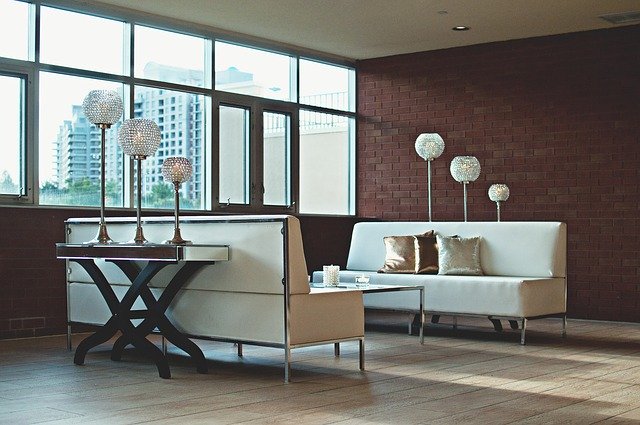What Is a Brick Veneer Wall?
Brick veneer is essentially authentic or manufactured bricks, which have been shaved into thin slices, revealing the face surface. Product suppliers make corner pieces additionally, which allows for the appearance of a full brick on exterior corners or transitions.
Brick veneer can be applied both for indoor or outdoor applications, but require slightly varying techniques. Interior examples can include wall surfaces which can create a “loft” type of appeal.
It can also be a cost-effective way to re-face the appearance of a fireplace.
Outdoor applications include the re-facing of concrete stairs and walkways to replicate a colonial style of a brick walkway. Exterior installations involve the use of thin-set mortar, applied as a bed in which the brick veneer pieces may be laid.
An interior application can be done using tile adhesive glue if being applied to surfaces such as drywall or existing paneling. Cutting of brick veneer pieces can be easily achieved with a handheld grinder or using a tile saw with a diamond tip blade.
When installing brick veneer products, it is customary to provide a 3/16” gap between brick courses and adjacent brick pieces. Tile spacers work best. The voids between the brick veneer pieces are designed to accept mortar (not thin-set mortar). Essentially, the process is similar to grouting tiles.
To install mortar between the brick veneer joints; a mason’s piping bag is a quick and efficient way to apply the materials. Those having greater skill may use a 3/16” trowel and hawk to “scrape” the mortar into the joints.
Once the mortar has been applied, it must be tooled smooth using a slick, and excess mortar should be cleaned off quickly. How the mortar is finished can create different appearances to the finished job. For example once can inset the mortar, or apply it so it is flush with the face surface of the brick veneer. Tinting the mortar can also contribute to a different appearance.
In the case of an exterior installation, mortar can be applied using a handheld sponge float, and in a similar fashion to grouting tiles; the process involves pushing the mortar into the joints and using the float from different directions, to ensure proper filling of the cavities. This method also requires that the brick veneer surface be cleaned off with a wet sponge three to four times, so no haze remains on the brick. When doing a large surface; it is important not to do too large an area, beyond what one can reach.
For outdoor applications, a sealer can be applied to help protect the brick veneer and to enhance the sheen of the finished surface. Some people may prefer the natural brick veneer look.
Whether indoor or outdoor application, the key steps to a successful project involve a few key must-dos.
It begins with proper measuring and preparation of the surface to which the brick veneer is being applied.
Using an indoor wall as an example; one should first check that the floor and ceiling are levels. It is critical to start from a level line surface. Using a four-foot spirit level, check the floor first and draw a level line from which to start.
The second step is the measure three courses of bricks and includes three courses of mortar joints spaces at 3/16” each. For the sum of that measurement, draw level lines horizontally up the wall in a progressive manner to provide a visual guide, and to help keep the brick course aligned.
When nearing the ceiling, one can detect whether there is any substantial deviation in terms of the level line of the ceiling. Such irregularities can be handled by cutting the brick veneer if there are only marginal differences. In the case of wide variance, it may be necessary to use a finished molding or trim board to hide the gap.
Drawing the guidelines first will help to identify any issues long before beginning the installation of the brick veneer product.
It is important to keep the mortar joints clear of dust and debris prior to installing mortar on exterior applications. Alo important for exterior applications are to ensure that the surface on which the brick veneer may be applied (such as concrete); is smooth, and free of chips or cracks. Such imperfections should be repaired with cement prior to applying the brick veneer. It is also suggested to apply a liquid bonding agent over the surface, prior to installation.
The finished result can transform the appearance of any exterior or interior space dramatically, as an economical way to introduce the look of bricks, without the weight or support structure that is typically required when using actual bricks. Colour choices and brick veneer styles and sizes can vary between suppliers. This makes possible, the ability to customize your look.
To learn more about brick or stonework, chimneys, and more; visit: www.avenueroadmasonry.com or view us on FACEBOOK™.

